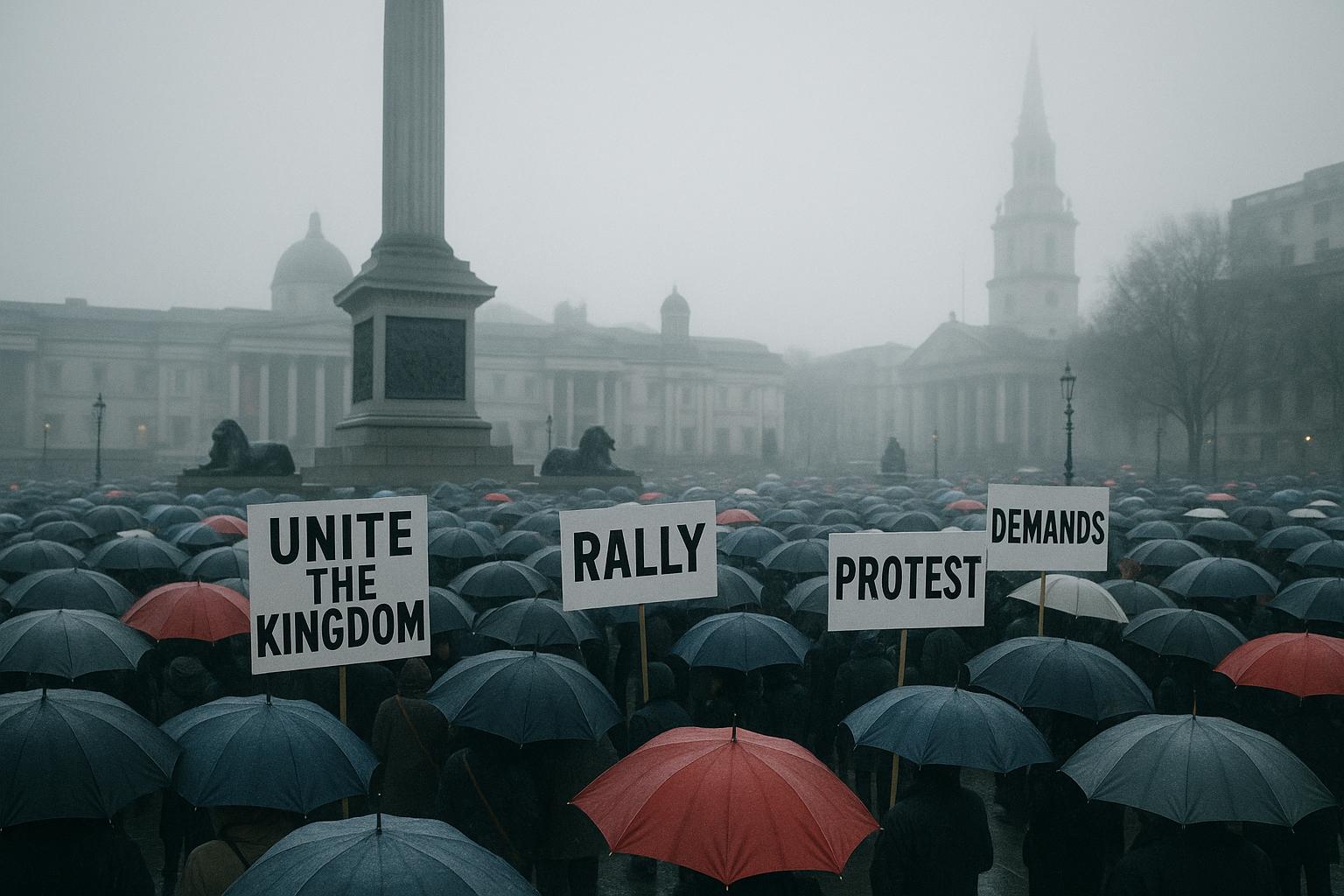Tommy Robinson’s “Unite the Kingdom” rally, held in central London on 13 September 2025, has sparked fierce debate over its size, nature, and implications amid a backdrop of escalating tensions around free speech, immigration, and nationalism in the UK. Robinson, a former BNP member and founder of the English Defence League, claims that the event drew three million participants, dubbing it the largest protest in British history. Yet the Metropolitan Police and various media outlets provide far lower estimates, ranging from approximately 110,000 to 150,000 attendees.
The Metropolitan Police employed CCTV and helicopter footage to gauge crowd size, arriving at an estimate of about 110,000 protesters supporting Robinson’s event, while around 5,000 attended a counter-protest organised by “Stand Up to Racism.” Expert analysis by crowd safety professionals concurs that the figure in the millions is implausible; for instance, aerial footage of key gathering points suggests roughly 70,000 to 76,000 attendees at peak moments, making Robinson’s claims appear highly exaggerated. The size of the crowd nonetheless places the rally among the largest right-wing protests in recent UK history, demonstrating significant mobilisation by nationalist and anti-immigration supporters.
Logistically, Robinson’s protest saw thousands assembling near Waterloo Station before crossing Westminster Bridge to Whitehall. It featured symbols like Union and St. George’s flags, with some participants brandishing American and Israeli flags or wearing MAGA hats, underscoring the broader global resonance of nationalist movements. Speakers included controversial figures such as actor-turned-commentator Laurence Fox, far-right European politicians, and even Elon Musk, who delivered a virtual address calling for radical political change and warning of impending violence. The event’s cultural programme mixed patriotic music with more contentious moments, such as a preacher advocating for bans on non-Christian places of worship and halal food, and nationalist slogans linking immigration with crime.
Violence marred parts of the day despite calls from organisers for peaceful conduct. According to police reports, clashes erupted when some supporters attempted to breach the barrier separating Robinson’s march from counter-protesters, resulting in projectiles thrown at officers and physical assaults. The Metropolitan Police recorded four serious injuries among their ranks, including an officer losing teeth and another suffering a head injury, with 24 arrests made. However, when placed in context, these figures suggest a relatively restrained level of violence compared with other large events like the Notting Hill Carnival. The number of arrests per attendee was significantly lower than that event, indicating that while violence occurred, it was not on a scale unprecedented for public gatherings.
The question of racism remains contentious. Supporters portray the march as a patriotic assertion of British values, with some minority figures, such as Sir Trevor Phillips, describing the crowd as diverse and largely composed of everyday people rather than extremists. Critics, including Labour MP Diane Abbott and London Mayor Sadiq Khan, have decried the atmosphere as steeped in racism and reminiscent of far-right marches from previous decades, highlighting the predominance of men waving nationalistic flags and instances of aggression towards police and counter-protesters. The event also generated multiple conspiracy theories online, with fabricated videos and misleading edits spreading rapidly on social media, further polarising public perceptions.
Prominent political figures reacted strongly, with Prime Minister Keir Starmer condemning the event’s far-right rhetoric and violence, affirming the need to uphold tolerance and unity while reproaching attempts to intimidate minorities. Starmer also criticised Elon Musk’s incendiary video address to the crowd as “dangerous,” although the UK government stopped short of imposing sanctions or restricting Tesla’s involvement in public contracts despite calls from opposition leaders.
Overall, while the “Unite the Kingdom” protest highlighted simmering divisions within British society over immigration, identity, and free speech, the factual record challenges some of Robinson's more grandiose claims. Attendance figures, police reports, and independent crowd analysis indicate a large but not unprecedented turnout, with incidents of violence that, while serious, were proportionally fewer than at some other major UK events. The rally’s mix of patriotic symbolism, controversial rhetoric, and moments of confrontation reflects a complex and deeply fraught socio-political landscape that continues to test Britain’s commitments to free expression and social cohesion.
📌 Reference Map:
- Paragraph 1 – [1], [2], [3], [4]
- Paragraph 2 – [1], [2], [3], [4]
- Paragraph 3 – [1], [2], [3], [6]
- Paragraph 4 – [1], [4], [6]
- Paragraph 5 – [1], [4], [5], [6]
- Paragraph 6 – [1], [4], [5], [7]
- Paragraph 7 – [1], [2], [3], [4], [5]
Source: Noah Wire Services
